
Conophytum blandum Photo by: Valentino Vallicelli
Origin and Habitat: Richtersveld North, North-western Bushmanland, North Cape, South Africa.
Altitude: 940-1347 metres above sea level.
Typical habitat: South East Steinkopf.
Habitat & ecology: It grows in Succulent Karoo in crevices on tops of arid quartz hills. It is potentially threatened by livestock grazing and mining.
Synonyms:
Description: Conophytum blandum is a small but robust caespitose (groundcover) plant, stemless or with short stems with time.
Bodies (paired leaves): Up to 4 centimetres tall and 2 centimetres thick. The leaves have a low degree of basal fusion, the free leaf-tips (lobes) are about 10 mm long and triangular in shape, keeled and apiculated. The margins are green to red or deep purple in colour. The epidermis is whitish-green to glaucous to deep blue green or brownish pink in colour. The epidermis could be spotted or completely smooth.
Flowers: Large, white to light violet, changing to rose.
Blooming season: The flowers are autumnal (rarely in summer) and diurnal.
Remarks: C. blandum is related to Conophytum herreanthus. There is a similitude in leaves shape rather than in flowers appearance. The leaves of C. blandum are indeed smaller than those of Conophytum herreanthus.
Bibliography: Major references and further lectures
1) Nicholas Edward Brown, A. Tischer, M. C. Karsten “Mesembryanthema; Descriptions: With Chapters on Cultivation and General Ecology” L. Reeve, 1931
2) Gordon D. Rowley “The illustrated encyclopedia of succulents” Crown Publishers, 01/Aug/1978
3) James Cullen, Sabina G. Knees, H. Suzanne Cubey “The European Garden Flora Flowering Plants: A Manual for the Identification of Plants Cultivated in Europe, Both Out-of-Doors” Cambridge University Press, 11/Aug./2011
4) Hammer, S. 1993. “The Genus Conophytum - A Conograph.” Succulent Plant Publications, Pretoria.
5) Hammer, S. 2002. “Dumpling and His Wife: New Views of the Genus Conophytum.” East Anglia Engraving Creative Colour Ltd, Norwich, England.
6) Ernst Van Jaarsveld, Ben-Erik Van Wyk, Gideon Smith “Succulents of South Africa: A Guide to the Regional Diversity” Tafelberg Publishers, Limited, 01/lug/2000
7) Heidrun E.K. Hartmann “Illustrated Handbook of Succulent Plants: Aizoaceae A-E” Springer, 2002
8) Werner Rauh “The Wonderful World of Succulents: Cultivation and Description of Selected Succulent Plants Other Than Cacti” Smithsonian Institution Press, 1984
9) Hermann Jacobsen “Lexicon of Succulent Plants” Littlehampton Book Services Ltd. 1974
10) Hilton-Taylor, C. "Red data list of southern African plants.2 Strelitzia 4. South African National Botanical Institute, Pretoria. 1996
11) Raimondo, D., von Staden, L., Foden, W., Victor, J.E., Helme, N.A., Turner, R.C., Kamundi, D.A. and Manyama, P.A. "Red List of South African Plants.2 Strelitzia 25. South African National Biodiversity Institute, Pretoria. 2009
12) Victor, J.E. 2002. South Africa. In: J.S. Golding (ed), "Southern African plant Red Data Lists." Southern African Botanical Diversity Network Report 14 (pp. 93-120), SABONET, Pretoria.
13) Hammer, S.A. & Victor, J.E. 2006. Conophytum blandum L.Bolus. National Assessment: "Red List of South African Plants" version 2013.1. Accessed on 2014/01/29
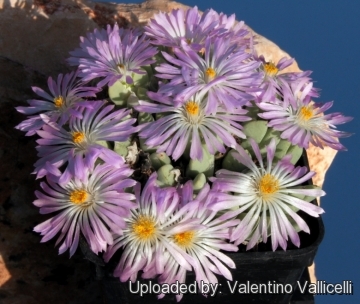 Conophytum blandum Photo by: Valentino Vallicelli
Conophytum blandum Photo by: Valentino Vallicelli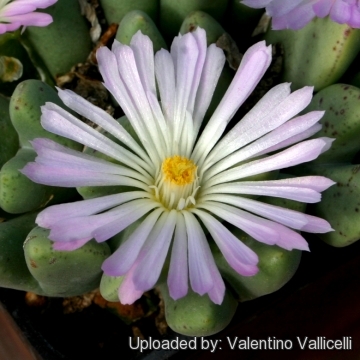 Conophytum blandum Photo by: Valentino Vallicelli
Conophytum blandum Photo by: Valentino Vallicelli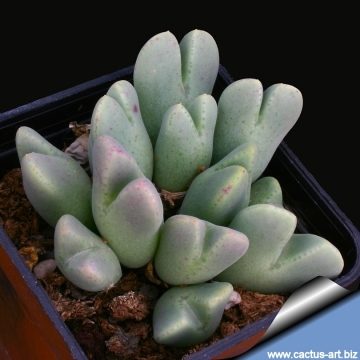 Conophytum blandum Photo by: Cactus Art
Conophytum blandum Photo by: Cactus Art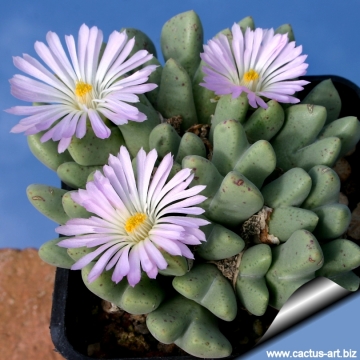 Conophytum blandum Photo by: Cactus Art
Conophytum blandum Photo by: Cactus Art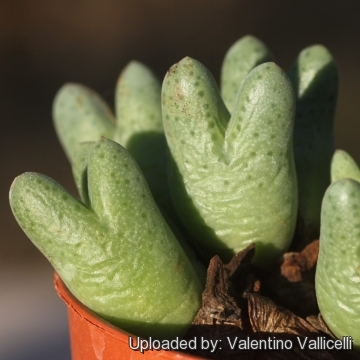 Conophytum blandum Photo by: Valentino Vallicelli
Conophytum blandum Photo by: Valentino Vallicelli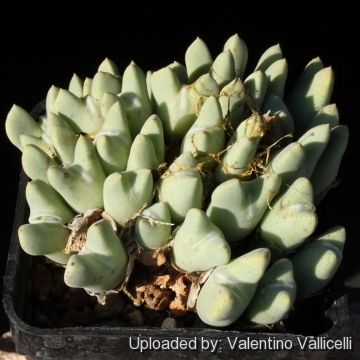 Conophytum blandum Photo by: Valentino Vallicelli
Conophytum blandum Photo by: Valentino Vallicelli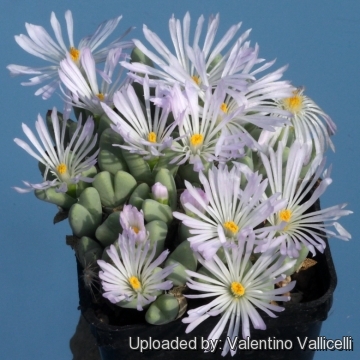 Conophytum blandum Photo by: Valentino Vallicelli
Conophytum blandum Photo by: Valentino Vallicelli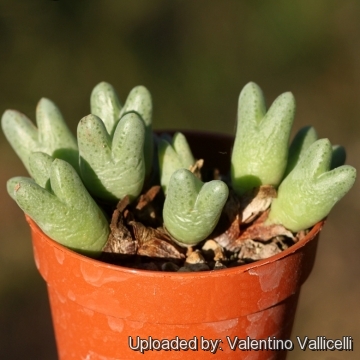 Conophytum blandum Photo by: Valentino Vallicelli
Conophytum blandum Photo by: Valentino VallicelliCultivation and Propagation: C. blandum is easy to grow. These plants grow on winter rain and head for summer dormancy. They require little water; otherwise its epidermis breaks (resulting in unsightly scars). Water minimally in summer, (only when the plant starts shrivelling), but it will generally grow even in summer if given water. Water regularly in winter after the previous year's leaves have dried up. Requires good drainage. Keep cool and shaded in summer, it needs full sun or light shade. Hardy to -2°C. Ensure a very good ventilation. Avoid to repot frequently. This plant may stay in the same pot for many years.
Propagation: It can be reproduced both by cuttings and seeds. Take the cutting from a grown-up mother plant. Each cutting must contain one or more heads along with a fraction of root.
Your Photos
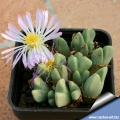
by Cactus Art



















